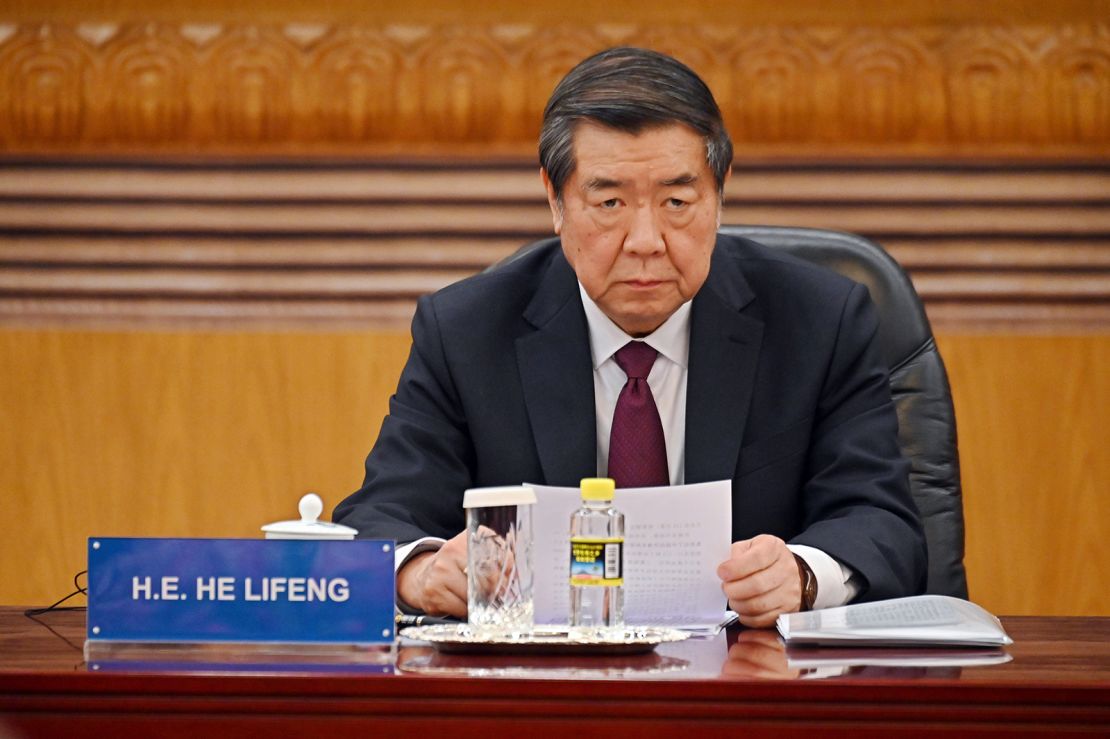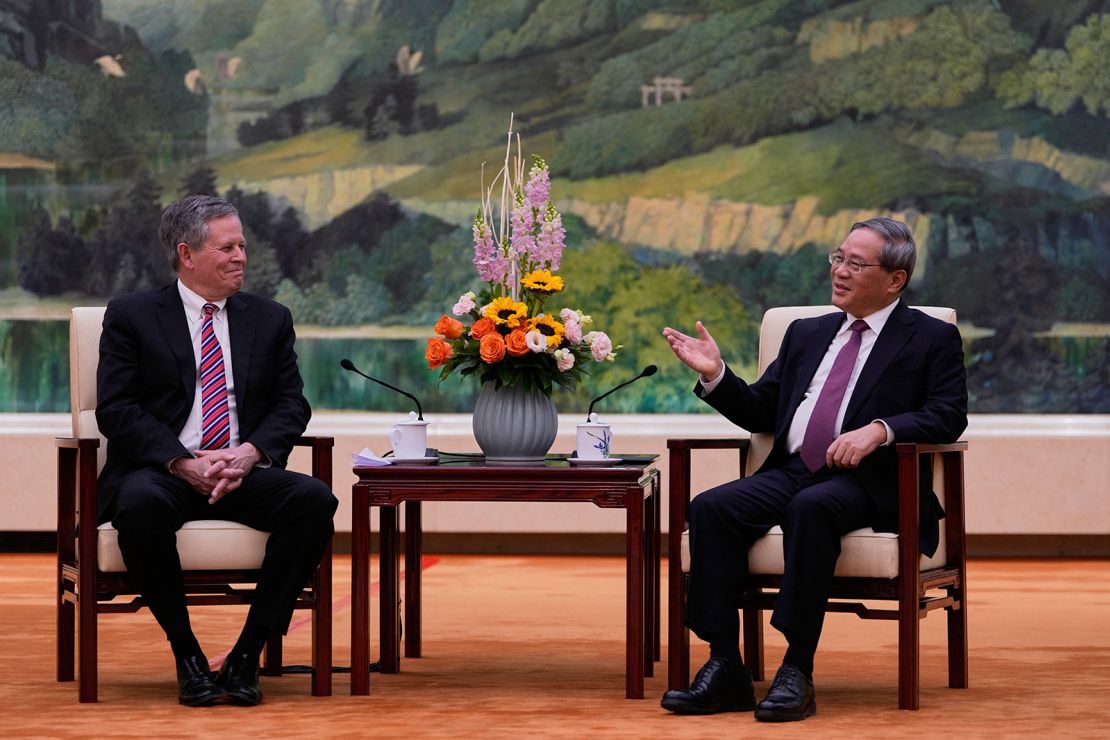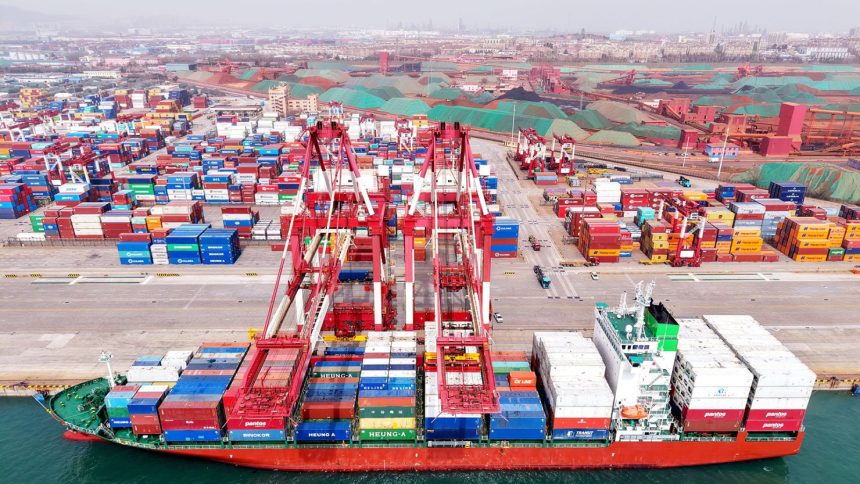Hong Kong
CNN
—
As Donald Trump’s April 2 “Liberation Day” for announcing “reciprocal” tariffs on America’s trading partners approaches, the question in Beijing is whether this will be the moment when its nascent trade war with the US really escalates.
Mixed messages have kept Chinese officials guessing. The US president has long railed against the gaping trade deficit between the world’s two largest economies – and on the campaign trail threatened upwards of 60% duties on all Chinese goods coming into the US. That’s potentially putting Beijing prominently in line for Wednesday’s expected measures.
And yet, in recent days, Trump has suggested he could reduce tariffs on Chinese imports as part of a wider bargain on the sale of Chinese-social social media platform TikTok.
Speaking on Air Force One on Sunday, he vowed again to complete a deal on the platform ahead of a Saturday deadline. Trump has also touted a “a great relationship” with Chinese leader Xi Jinping even as his government slapped tough controls on China’s access to US tech and called for tighter investment controls.
Beijing is not alone in facing vacillations from Trump in his second term. The US leader appears to use uncertainty as a tactical weapon as he faces off against trade partners near and far.
On Monday, Asian shares followed US futures in falling because of the riskiness over what the upcoming tariffs could be. Stock markets in Japan and South Korea, whose carmakers are likely to be disproportionately affected by measures announced by Trump last week, were hit especially hard.

But for China, America’s closest peer in economic size and its key geopolitical rival, the shape and tenor of their relationship can affect the whole world.
One possible outcome, a de facto decoupling, would upend global supply chains and roil parts of each economy. Another could see the two reframe how they co-exist amicably in a global economy.
“We’re at a real fork in the road,” Scott Kennedy, a senior adviser at the Center for Strategic and International Studies think tank in Washington, told reporters on the sidelines of a global business forum in Beijing last week.
“We might see these negotiations and pressure result in a pulling back of these threats and a resumption of a more stable relationship, but things could get a lot worse. We could see tariffs go sky high and investment fall. That would lead to some sort of at least incremental decoupling between the two economies, and there’d be a lot of suffering,” he said.
In the face of the uncertainty, Beijing’s message has been clear: The US should “return to the right track of dialogue and cooperation at an early date,” a Foreign Ministry official said earlier this month. But “if war is what the US wants, be it a tariff war, a trade war or any other type of war, we’re ready to fight till the end.”

Tit for tat
During what the US described as an “introductory meeting” between America’s top trade representative Jamieson Greer and China’s Vice Premier He Lifeng last week, He “expressed serious concerns” about existing US tariffs and the potential introduction of further duties on April 2, according to a state media readout.
A separate summary of the call from a social media account linked to China’s state broadcaster was more explicit on what He said: “If the US insists on damaging China’s interests, China will resolutely counterattack.” Any US changes to China’s trading status “will not affect China’s win-win cooperation with the world,” He also said.
China has already hit back swiftly – though modestly – on the two tranches of additional 10% tariffs Trump has imposed on Chinese imports to the US so far, while sharpening a toolbox of other countermeasures.
Chinese Premier Li Qiang last week signed an order strengthening China’s “anti-sanctions law,” which allows Beijing to take action against foreign countries that “contain or suppress” China or discriminate against its entities and individuals.
Earlier this month, Beijing used anti-discrimination measures under its Foreign Trade Law for the first time to raise tariffs on Canadian imports. Late last year, the government also overhauled its export controls for “dual use” items and then swiftly tightened export of gallium, germanium, antimony – key materials with military applications.
“China knows the way it handled the US for Trump’s first term might not work. Beijing underestimated the US determination to wage a war, it did not have enough bullets to have a tit-for-tat war,” said Shanghai-based foreign affairs analyst Shen Dingli.
Then, China’s retaliatory measures largely consisted of slapping tariffs across a wide swath of US imports before the two sides reached a “phase one” trade deal that analysts say China never fully implemented.
This time, Beijing is moving more strategically and using other tools as it aims for leader-level talks with Trump to stop the escalation, Shen said.
Beijing has also been using global uncertainty around Trump’s “America First” and trade policy to pitch itself as a champion of the global economy – and win economic allies among US trade partners and companies from Asia to Europe.
“Decoupling and breaking supply chains harm everyone and lead nowhere,” Xi told an audience of global executives in Beijing last week, which included CEOs of US firms FedEx and Qualcomm. “Blocking others’ paths will ultimately only obstruct your own,” the Chinese leader said.
Data show China has already diversified imports and exports away from the US since the first Trump trade war. But access to European and Asian markets will become increasingly critical for Beijing if it faces mounting barriers to enter the American market.
Those could be numerous as Trump seeks to close trade deficits and also punish behaviors he sees as harming the US. The president last week also threatened hefty tariffs on imports from countries that import Venezuelan oil, a list that China tops.
“It feels like it’s gravitating towards a situation where the overall tariff rate on Chinese goods shipped the United States by summertime could actually reach the President’s proposed 60%,” said Kurt Tong, managing partner at Washington DC-based advisory firm Asia Group, a former ambassador who served as consul general in Hong Kong.
That’s a level economists say “will lead to a dramatic decline in shipments,” he added.

Getting to the table
Both sides have a strong interest, ultimately, in cutting a deal. But the question is how to get to the negotiating table – and whether they can reach an agreement when they are there.
During a recent visit to Beijing, Trump ally and US Senator Steve Daines told Bloomberg News that China must halt the flow of fentanyl ingredients into the US before any trade negotiations could begin.
That could be a challenging bar, if true, as China has vociferously defended its efforts to stem the flow of fentanyl-related chemicals outside the country and slammed the US for “smearing and scapegoating China.”
Trump, meanwhile, “will want to build a maximum pressure campaign before the other side will spit out the best deal that they can offer,” said Yun Sun, director of the China Program at the DC-based Stimson Center think tank.
And China won’t want to negotiate “issue after issue,” rather favoring a package deal. “But it has to be a two-sided deal. It cannot be a unilateral concession,” and unlike smaller economies, “China is not going to roll over,” she said.
Analysts have gamed out a range of potential negotiation points that could be on the table if talks between the two sides take off. Those range from agreements for China to buy more US goods, reduce its exports or pledge more US investment – a proposition made more difficult by fresh US efforts to curb Chinese investment in sectors deemed sensitive.
Chinese officials will be eying concessions around US restrictions on technology, a tone reset or even changes to the level of military aid the US gives to Taiwan, the self-ruling democracy Beijing claims, observers say.
Whether a so-called grand deal between the two is possible, experts remain unsure.
“Donald Trump, theoretically, can consider the entire exercise successful if he puts on high tariffs and there’s no deal,” said Tong, pointing to how in that case, the president could take credit for restructuring the US-China economic relationship.
However, he said that a similar calculation exists for Xi, who can be seen as a winner in his own political sphere if Beijing retaliates step by step on its own terms.
“That,” he said, “is the thing that both US analysts and the White House, don’t fully grasp.”
CNN’s Fred He, John Liu and Hassan Tayir contributed reporting.




